Delta-T Devices is providing soil sensors and data loggers to the British Beet Research Organisation (BBRO) for use in important drought and water deficit research projects.
On average, 59% of UK sugar beet is grown on sandy or sand-based soils, making the crop particularly vulnerable to drought and water deficit.
Data from British Sugar* shows that yield losses due to water deficit average 10% annually, rising to 25% in the driest years – furthermore, as climate projections predict increasingly warmer** and drier summers, drought-related yield losses are likely to become more frequent .
Irrigation is often not a viable option for many sugar beet growers due to limited access to infrastructure or prioritization of irrigation for higher-value crops such as potatoes.
And even when available, the return on irrigation is only beneficial during the very driest years***
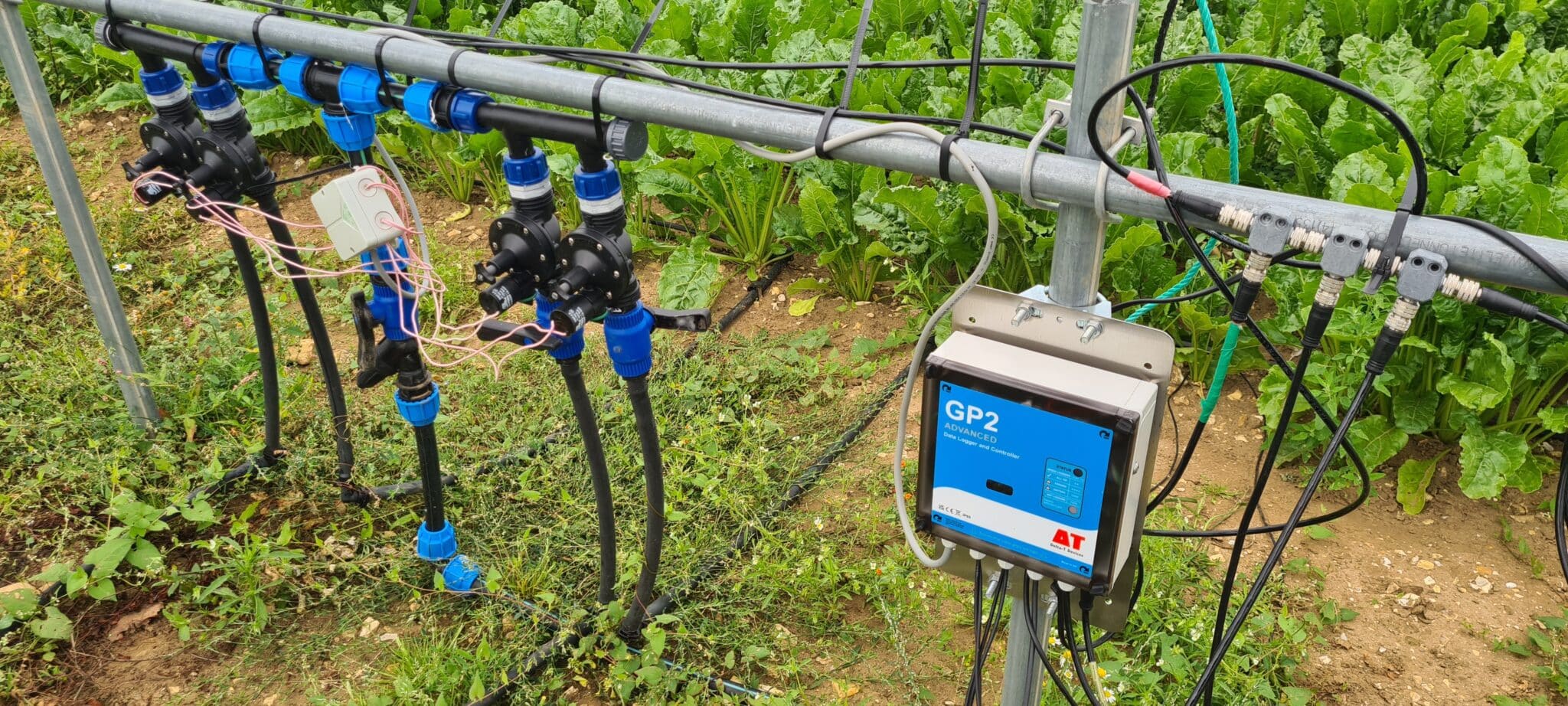
As a result, developing and selecting varieties that perform well under both optimal and dry conditions is an important aim for the Beet industry.
Georgina Barratt (Applied Scientist at BBRO) says, “To ensure the UK sugar beet crop can produce a stable yield across years with varying rainfall levels, it is imperative that varieties with high drought tolerance – without yield penalties – are available for UK growers. These drought-tolerant varieties of beet need to maintain yield without requiring significant changes in grower practices, offering an environmentally and economically sustainable solution.”
Research Methodology
Drought tolerance in sugar beet is a complex trait, influenced by a range of physiological and morphological characteristics. Past research by Ober (2005) demonstrated that varieties with higher drought tolerance indices (DTI) tended to retain green canopy cover and exhibit low wilting scores, suggesting efficient water uptake even under declining moisture conditions.
This efficiency can be attributed to several traits, including:
- Root architecture for deep and effective water extraction
- Leaf water content and stomatal density for water flow regulation
- Storage root dynamics that affect hydraulic conductivity
To reliably assess these traits, varieties must be tested under field-realistic conditions, both with and without water deficit.
DTI scores are calculated based on yield under both conditions, providing growers and breeders with actionable insights for variety selection.
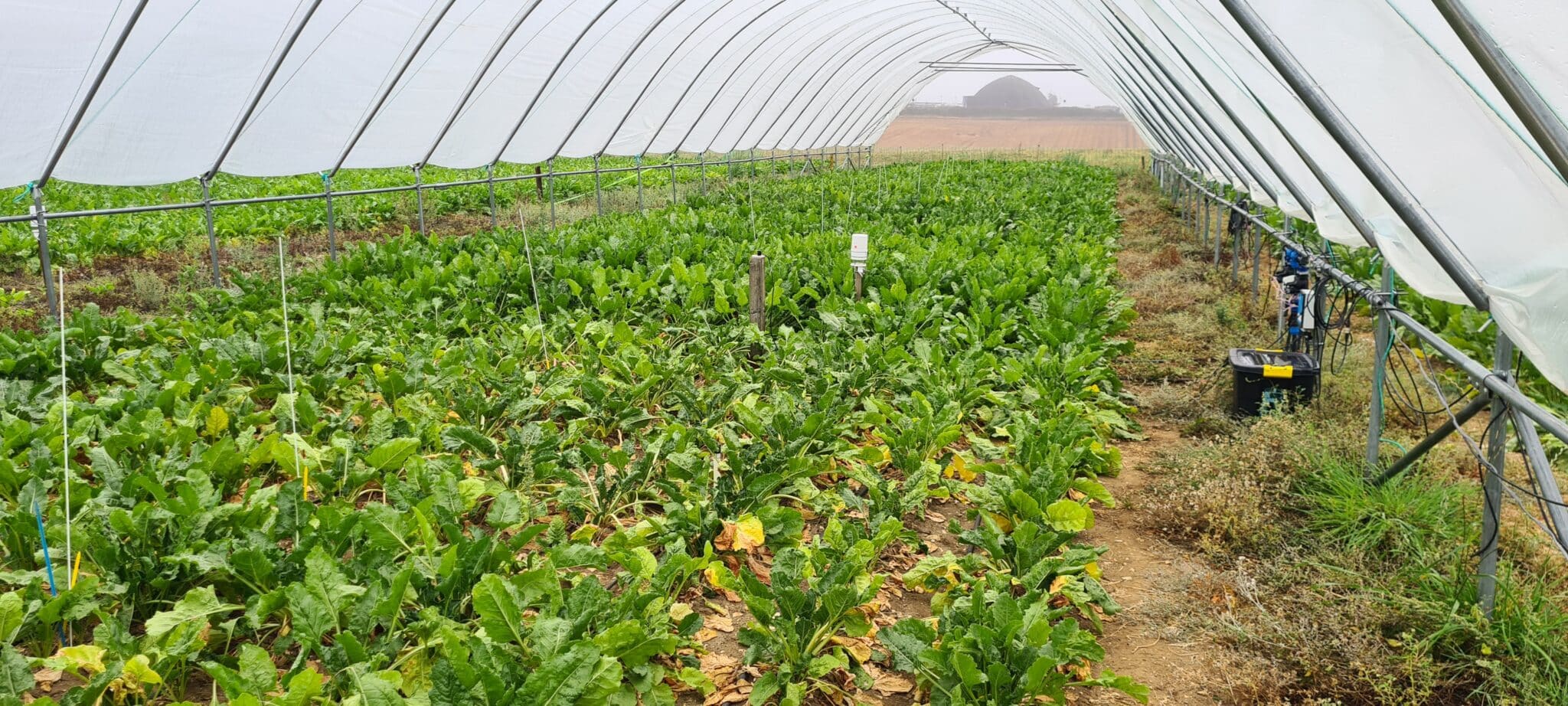
In 2023, BBRO launched its drought research trial using a controlled environment approach under a double-span, 56-meter-long polytunnel.
This setup enabled the manipulation of soil moisture levels while maintaining a comparison block of sugar beet grown outside the polytunnel to reflect natural, unmanipulated growing conditions.
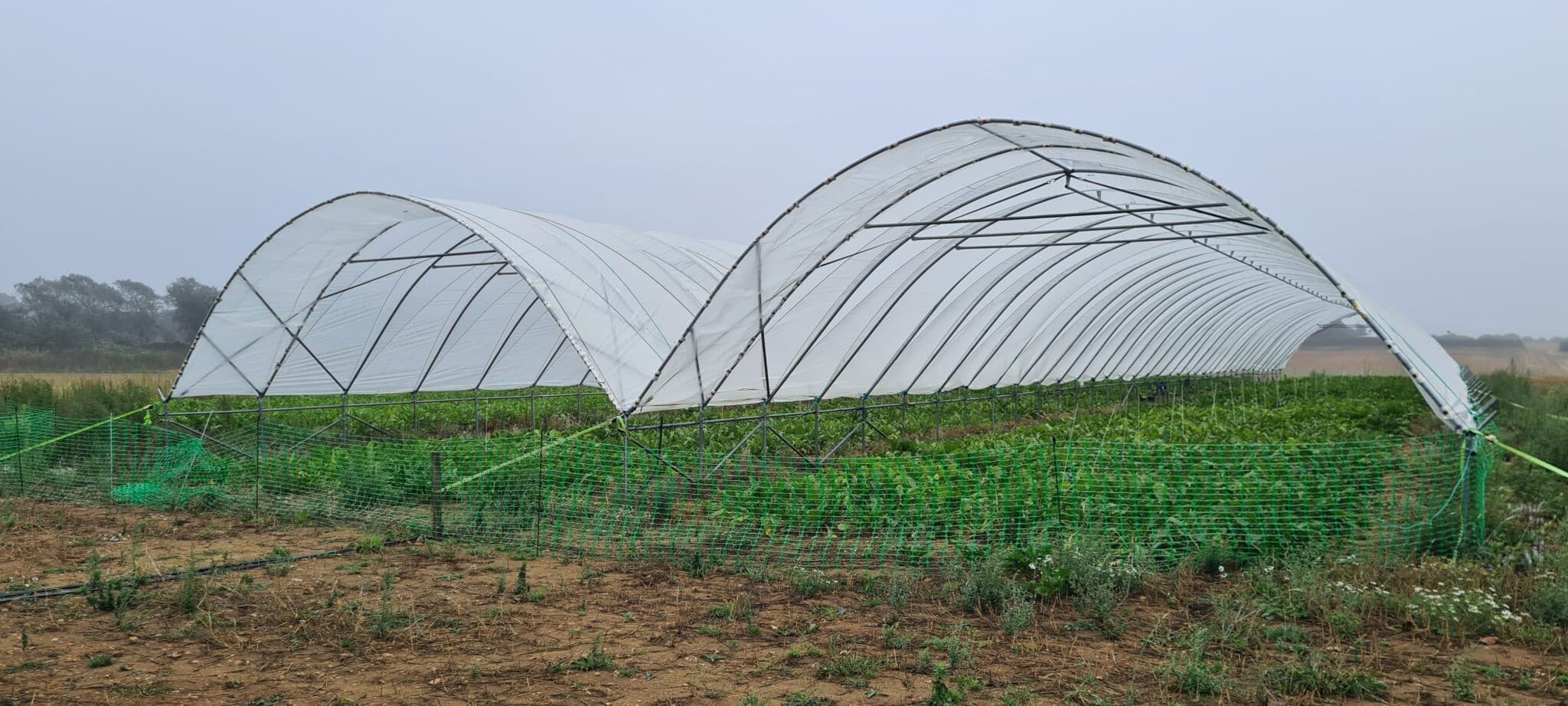
While a commercial irrigation controller was initially employed, it was unable to maintain the low, precise soil moisture thresholds required for the drought treatment.
The Use of Delta-T Devices Products
In 2024, BBRO integrated a new soil moisture monitoring and irrigation control system using Delta-T Devices’ GP2 Data Logger and WET150 soil moisture sensors.
Georgina states, “The GP2 logger and WET150 setup gave us the control we needed to maintain soil moisture at a user-defined level.”
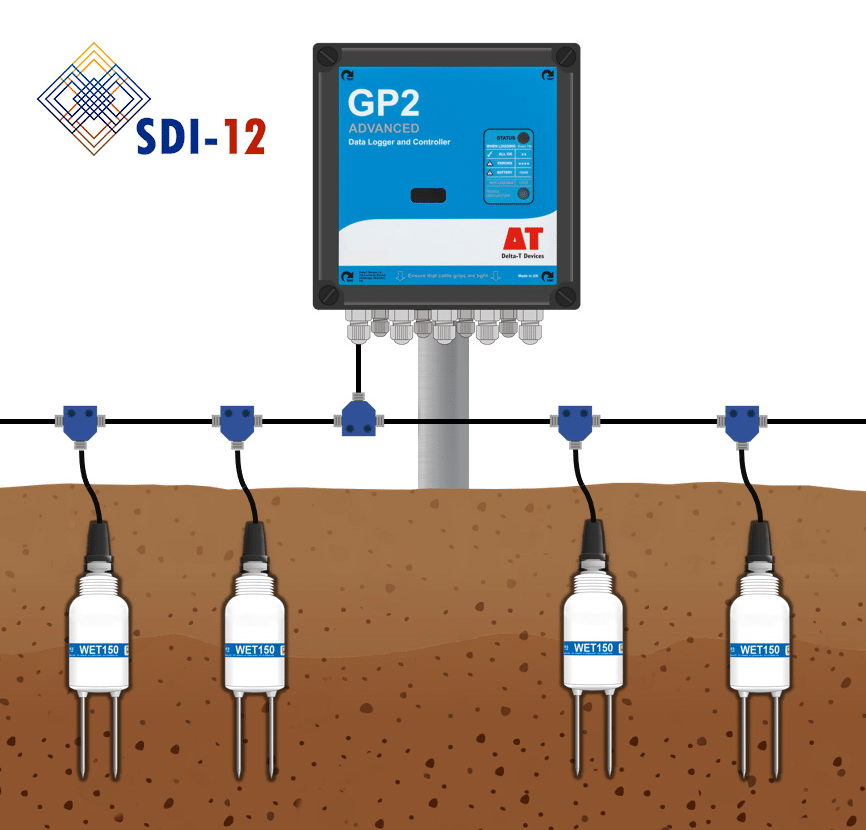
Key features of the setup:
- Four WET150 sensors were installed in each treatment section
- The GP2 logger calculated average moisture readings from the four sensors
- Based on these readings, the system-controlled irrigation solenoids to manage a drip irrigation system
- Logged data also included environmental parameters from weather stations and PAR sensors
A dashboard with a red-amber-green indicator system was created to visually track whether trial plots were maintaining target soil moisture levels. This dashboard allowed researchers to tweak irrigation settings in real time.
Georgina says, “This system was introduced halfway through the 2024 trial and was a great success. Soil water levels were kept within target and enabled a big contrast between the irrigated and droughted plots.”
Figure 1 (below) shows the volumetric water content (VWC) data from the WET150 sensors, with the upper curves representing irrigated plots and lower curves showing droughted conditions.

Fig 1.
Results so Far and Future Planning
The 2024 results indicated clear contrasts in soil moisture between irrigated and droughted plots, but no significant varietal response differences were detected, likely because drought stress was imposed too late—after the 12-leaf stage.
“Drought tolerance in beet is often driven by physiological changes early in development under early drought stress.”
In response, the 2025 trial will apply drought stress earlier, at the 5–6 leaf stage, using the Delta-T system from the start of the season. This will allow for more meaningful insights into varietal drought tolerance during the most critical growth phases.
Figure 2 (below) presents the average adjusted yield for sugar beet grown under droughted, rainfed, and irrigated conditions, harvested at 181 days after sowing (DAS).
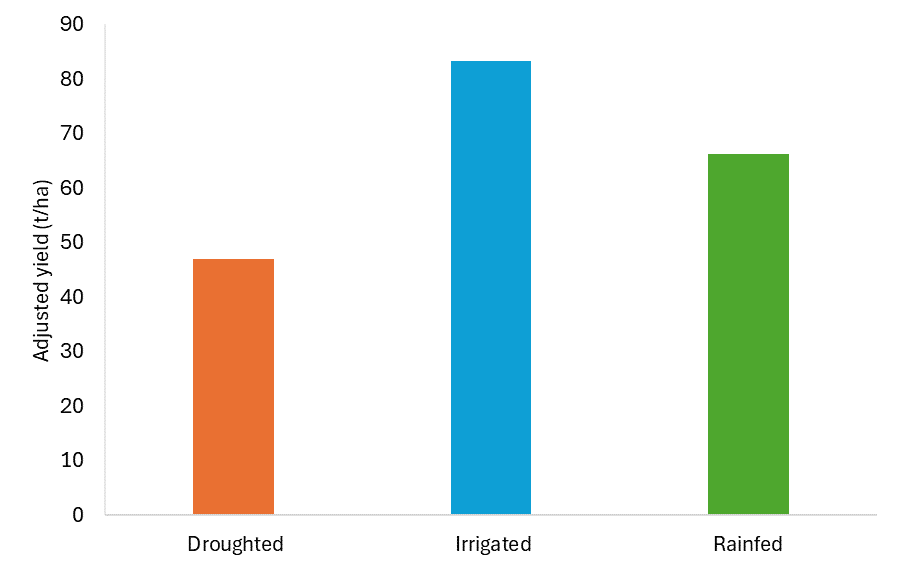
Fig 2.
Conclusion
The BBRO drought trial represents an important step toward developing sugar beet varieties with enhanced drought tolerance. In environments where irrigation is impractical, varietal selection becomes the key strategy for ensuring yield stability under changing climate conditions.
The Delta-T Devices’ GP2 and WET150 system has proven to be a robust and precise tool for managing controlled drought conditions. Its integration into the BBRO trial has provided:
- Reliable moisture control across multiple treatment sections
- Automated irrigation based on real-time data
- A scalable and cost-effective monitoring solution
Georgina concludes, “The ability to maintain target soil moisture using the GP2 and WET150 system has been a game-changer for our drought trials. We’re excited to see what earlier intervention will reveal in 2025.”
* Pidgeon & Jaggard, 1998 ** Evans, 2017 ***Hess, BBRO project 16-02
Visit the WET150 Soil Sensor Sensor page

